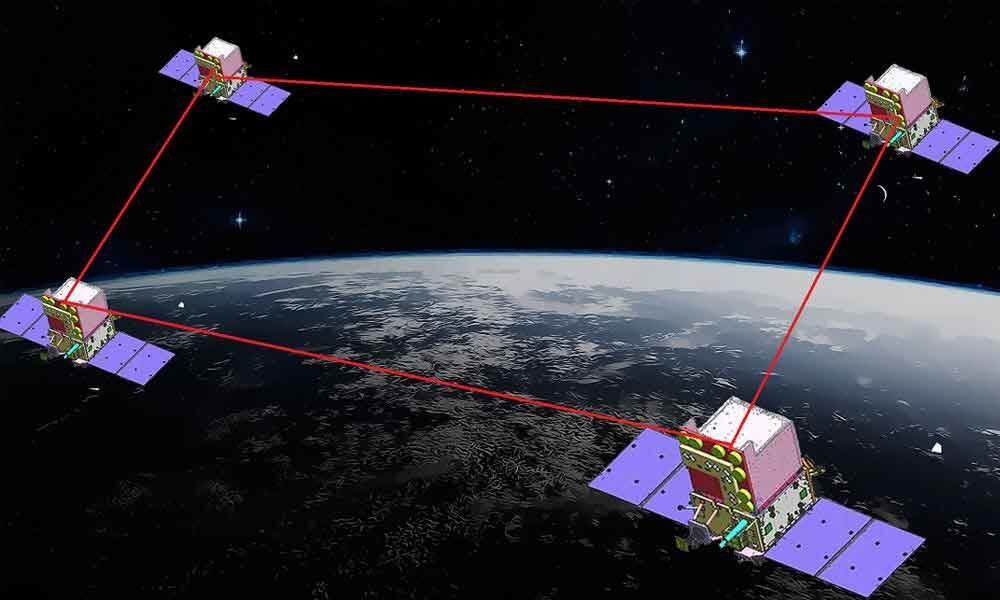Live
- Disinformation & Disempowerment: How women’s basic rights and freedoms are being eroded all over the world
- Mahila Meekosam launched for protection of students, women
- COP 29: Rich Nations Have Their Say
- Industrial parks to be set up in every constituency
- Edu institutions to receive fee reimbursement soon
- SP orders speedy disposal of PGRS petitions
- 11 get placement after completing CPBFI
- Balineni dares Chevireddy for an open debate
- SRM hosts IRIS-2024 summit
- Make AP solar hub: CM
Just In
India's space mission reaches new height


Indian Space Research Organisation (ISRO) has successfully launched the electronic intelligence satellite EMISAT along with 28 nano satellites of global customers from Sriharikota
Indian Space Research Organisation (ISRO) has successfully launched the electronic intelligence satellite EMISAT along with 28 nano satellites of global customers from Sriharikota.
With this, India now has a new surveillance satellite, thanks to a special mission of the Polar Satellite Launch Vehicle (PSLV C-45) that has many firsts. EMISAT and the 28 other satellites were successfully placed in the orbit within two hours of launch, the space agency said.
Notably, the launch of EMISAT took place just six days after India test-fired an anti-satellite (ASAT) missile in the Mission Shakti Operation. As Dr G Satheesh Reddy, chief of DRDO said, it was really a double bullseye in space.
EMISAT weighs 436 kgs and will monitor and give locations for enemy radar sites deep in their territory. Till now we were using airplanes as early warning platforms, but this satellite will give a space-based platform to sniff out enemy radars.
This is all the more important to us as China is not only using its technological advances in spying on us, but also equipping Pakistan with its latest defence equipment to be used against us to protect its own investments in the China Pakistan Economic Corridor cutting through Gilgit-Baltistan and Balochistan.
An interesting point is that the EMISAT roared through 300 pieces of debris left behind by last week's ASAT missile launch. There is a significant point in this present launch.
EMISAT will be following a highly elliptical orbit, also called a signature SIGINT orbit, after its launch on the PSLV-QL, a new variant in the PSLV family. This will be helping EMISAT the maximum amount of time to record high-resolution signals from a specific place. With this, India has now developed the capability in signal intelligence - intercepting signals broadcast by communications systems, radars and other electronic systems on the ground from hundreds of kilometres away in space.
It will also help our scientists, and thereby the forces, to scan through ice, rain, coastal zones, land masses, forests and wave heights in a relatively easy fashion. Outer space is integral to the functioning of modern societies, as a diverse range of services and devices ranging from missiles to mobiles, banking to navigation, meteorology to disaster management, are helped by these satellites.
If NASA comes out with criticism of our ASAT missile, it is only a general concern over the debris build-up in outer space. While such concerns are genuine and must be held dearer to one's heart, there is little that a country like India could do when it is surrounded with forces inimical to its interest and who keep provoking it on a daily basis.
There could be no greater concern for any sovereign country in the world than its own security. Hence, ASAT missile and now EMISAT are not only essential but also the research should be taken forward to higher levels.
Unlike China which displayed no transparency in its own ASAT test of 2007 which was condemned globally, India has always displayed the highest responsibility in its space programmes.
Space assets must be harnessed for intelligence, surveillance, and reconnaissance functions more rigorously and with penchant by India. Kudos to our scientists.

© 2024 Hyderabad Media House Limited/The Hans India. All rights reserved. Powered by hocalwire.com






